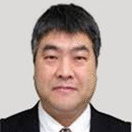RESEARCH ARTICLE
Intraocular Pressure and Refractive Changes Following Orbital Decompression with Intraconal Fat Excision
Suresh Sagili, Jean-Louis DeSousa, Raman Malhotra*
Article Information
Identifiers and Pagination:
Year: 2008Volume: 2
First Page: 73
Last Page: 76
Publisher ID: TOOPHTJ-2-73
DOI: 10.2174/1874364100802010073
Article History:
Received Date: 11/2/2008Revision Received Date: 14/3/2008
Acceptance Date: 14/3/2008
Electronic publication date: 16/4/2008
Collection year: 2008

open-access license: This is an open access article distributed under the terms of the Creative Commons Attribution License (http://creativecommons.org/licenses/by/2.5/), which permits unrestrictive use, distribution, and reproduction in any medium, provided the original work is properly cited.
Abstract
The purpose of this study was to measure the changes in intraocular pressure (IOP) and refraction following orbital decompression for thyroid orbitopathy.
Methods:Retrospective review of 18 eyes in 10 consecutive patients who underwent orbital decompression including intraconal fat excision for proptosis secondary to thyroid orbitopathy. IOP using tonopen, exophthalmometry, autorefraction and autokeratometry measurements were performed at 1-week, 1-month and 3-months after surgery.
Results:There was no statistically significant difference between the preoperative and postoperative IOP at 3 months. There were no significant differences found between preoperative and post operative keratometry readings or automated refraction following orbital decompression.
Conclusion:Our study did not find a significant change in IOP and refraction following orbital decompression with intraconal fat excision. A larger prospective study is required in order to evaluate the role of intraconal fat excision in reducing IOP due to it’s potential role in patients with concurrent glaucoma






